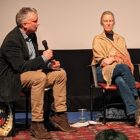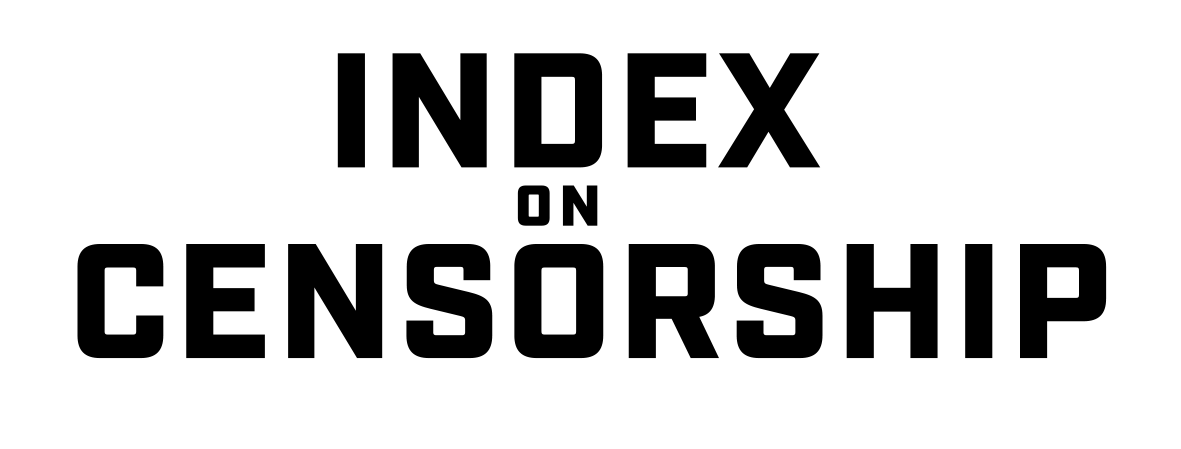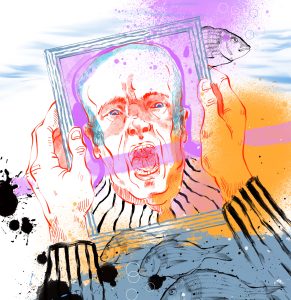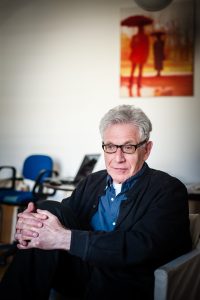27 Jan 2023 | FEATURED: Martin Bright, Index Arts, News, Russia, Ukraine, Uzbekistan, Uzbekistan
The title of the play Crimea, 5am refers to the time in the morning the authorities choose to raid the homes of activists in the Russian-occupied territory. It is a time of fear and horror for the Crimean Tatars whose voices make up the text of this verbatim play, taken from the testimonies of the men now held in Putin’s prisons and the families waiting at home for them.
Crimea 5am brings to life one of the lesser-known aspects of the brutal war in Ukraine, which began not in February 2022 but in March 2014. It draws on the oral history of the suppression of the Tatar Muslim minority, who returned to the peninsula in the 1990s following independence after years of exile from their homeland.
Much of what we know of life in Crimea since 2014 has come from activists turned citizen journalists. This is one of the reasons the Russian authorities have cracked down so hard on Tatars, characterizing them either as political extremists or Islamist terrorists linked to the group Hizb-ut-Tahrir.
Two examples from the play show how ordinary Tatars went from being activists, to journalists to dissidents in the face of Russian repression.
Tymur Ibrahimov, 38, moved back to Crimea from Uzbeksitan at the age of six in 1991 after the death of his father. In the play, his wife Diliara, explains his transformation from computer repairman to enemy of the state: “It used to be different, until 2014, you know, back then he would make home videos, he would take pictures of nature, like, of the bees and butterflies on flowers, just like that. It all changed in 2015 and he began making footage of what was going on in Crimea. That is, all the searches, court hearings, “Crimean Solidarity” meetings.” For the crime of recording the resistance of his people Tymur was sentenced to 17 years in prison.
Narminan Memedeminov, 39, also moved back to Crimea from Uzbekistan in 1991. After graduating in economics he became involved in human rights activism and media coordinator for the Crimean Solidarity movement. “Here’s an example: I went and took a video of somebody helping out a prisoner’s family, like, basic stuff, they would take the child to the hospital, help them hang the wallpaper, fix the plumbing, send off the parcels to the detention centre and so on… And in the end, everybody involved was at risk: those who took videos, those who helped, those who did anything at all.”

Index editor at large Martin Bright (left) taking part in a post-play discussion.
The stories have been brought together by two Ukrainian writers, Natalia Vorozhbyt and Anastasiia Kosodii and the project is backed by the Ukrainian Institute and the Ukrainian Ministry of Foreign Affairs as a way of bringing the situation to international attention. I had the privilege of watching a reading of of the play at the Kiln Theatre, Kilburn in London last week with professional actors alongside non-professional activists and supporters. Directed by Josephine Burton and produced by Dash Arts, the play focuses on the domestic lives of the families of the Tatar political prisoners and particularly the women.
Burton told Index that until the 2022 Russian invasion of Ukraine, Crimea has drifted from international attention. “Helped by a media blackout, we forgot that the peninsula has been occupied by Russians for almost nine years now and its Tatar community oppressed,” she said. “Determined to fight this silence, the community has relentlessly documented this oppression – filming and uploading searches, arrests and court cases of its people by the Russian Security Forces. And for this act, these “Citizen Journalists” have been arrested themselves and given insanely long sentences, some for up to 20 years in penal colonies.”
Crimea 5am focuses on the everyday lives of Tatar dissidents, drawn from many hours of recordings with the families of 11 political prisoners. “It builds a beautiful and powerful portrait of a community, ripped apart by this tragedy, but also woven with stories of love and resilience through the prism of the wives left behind. It is this mix of tenderness and humour alongside the unfathomable darkness which enables its impact. We the audience become invested in their lives and feel the impact of their tragedy deeply.”
Dash Arts is looking for further opportunities to perform Crimea 5am: https://www.dasharts.org.uk/
6 Jan 2023 | Afghanistan, Belarus, China, Iran, Mexico, Russia, Ruth's blog, South Sudan, Ukraine, United Kingdom, United States
Happy New Year!
I think we can all agree, regardless of where we live, that 2022 was a tumultuous year. There was seemingly a new crisis every day. Totalitarian regimes moving against their populations became increasingly normal, from Iran to China. The ongoing rise (and occasional fall) of populist politics. The Russian invasion of Ukraine. The rise of energy and food costs and the impact on some of the world’s poorest. The attempted murder of Sir Salman Rushdie. And to be parochial just for a moment, complete political insanity in the UK.
I really hoped that 2023 would mark the end, or at least a pause, of that wonderful Chinese saying – we live in interesting times. Even for just a few months I had dreamed of a period of calm, of quiet, of dullness. Or at least a few weeks so we could all catch up on life and enjoy the world we live in, rather than being anxious at turning on the news.
It is only the sixth day of the year and my wish for calm has already been broken. This week we have seen political dysfunction in the USA; Belarus has commenced trials against many of their high-profile detainees who were arrested during the demonstrations against Lukashenka; there have been deadly riots in Mexico and the news is filled with the gloom of Covid (and China’s censoring of news on it), flu and inflation. It’s day six…
We knew that this year would see significant world events, as the impact of the war in Ukraine continues to be felt. But China is also likely to seek to exploit this global diplomatic distraction for their own nefarious wants. And of course the protests in Iran, Afghanistan, South Sudan and Mexico continue apace – even as they evolve.
Index will remain busy in the months ahead as we seek to shine a spotlight on the actions of totalitarian regimes and make sure that you hear from the people behind the headlines. From the women now banned from attending university in Afghanistan, from the democracy activists imprisoned in Belarus, from the Rohingya mothers held in camps as they flee Myanmar, from the journalists who fight to be heard and stay alive in Mexico. Index will keep providing a platform for the persecuted, so they can tell their stories and you can hear them.
Happy New Year in these interesting times.
6 Jan 2023 | News, Volume 51.04 Winter 2022, Volume 51.04 Winter 2022 Extras
Pavel Litvinov, who recently turned 82, is an imposing figure. When I meet him on a rainy August day, he fills the space in his compact living room in the suburban New York City garden apartment he shares with his wife, Julia Santiago. We picked the day, 22 August, for our interview out of convenience, but it happens to resonate. It was on 21 August 1968 that Soviet troops invaded Czechoslovakia, demolishing the “socialism with a human face” of its leader, Alexander Dubček.
Days later, at noon on 25 August, the then 28-year-old physicist Litvinov, with seven comrades – including the group’s organiser, poet Natalya Gorbanevskaya (and her baby in a pram) – met in Moscow’s Red Square to unfurl a banner that turned out to be life-changing. Its message was plain: “Hands off the CSSR [Czechoslovak Socialist Republic].” Within minutes, the KGB arrived to forcibly take them away to camps or psychiatric hospitals. Litvinov, hit hard in the face, was arrested and sent to internal exile in a Siberian mining town for five years with his then wife. His daughter was born there.
“I was in prison for several months and then in exile and had to work in the mines. I couldn’t leave the village; I couldn’t get permission to travel,” Litvinov said. Recalling his motivation for the action, he added: “It felt internally necessary. I had a very strong feeling of what is fair and unfair, and that people have to treat each other gently and with respect.”
The Litvinov family was well known in both dissident and Soviet ruling circles. His grandfather was Maxim Litvinov, once Joseph Stalin’s people’s commissar for foreign affairs until he was deposed in 1939 because, as a Jew, he became an obstacle to warmer ties with Adolf Hitler. “I was 11 when my grandfather died; we were good friends,” he explained. “He was already disappointed in the Russian revolution and the Bolsheviks.” His parents’ home was a gathering place for dissidents. Literature also inspired him. “Most important was Russian literature from the 19th century –Pushkin, Tolstoy, Lermontov… They expressed a feeling of compassion toward helping others under the autocratic state,” he said.
Indeed, books and literature, in the form of samizdat, were crucial – not only the literary classics but also records of the dissidents’ trials in real time. Litvinov deconstructs the samizdat publication process for me, explaining how, during these trials, somebody would gain access to the court and bring the information home. “They would write the transcript by hand; then we would find someone who had a typewriter,” he said. “I would print pages on very thick photographic paper. The book would be photographed and developed in a darkroom. Sometimes we would have a party to read the book. I would read the first page, give [someone else] the second page, who would give it to the next one. We would read Doctor Zhivago in half a night, then have tea or vodka. Then I would give a film to a friend from Leningrad, and someone would come from Kyiv – same procedure.”
From his earliest dissident days, Litvinov’s strategy was to appeal to allies outside the Soviet Union. And that’s the connection to Index on Censorship. In 1968, he co-wrote with dissident Larisa Bogoraz an Appeal to World Public Opinion, about dissident trials. “I wrote the appeal in Russian. Some of the foreign correspondents translated it to English. In the evening we would always listen to the BBC. They started to speak about the letter. They said Stephen Spender read about it… and Spender called Igor Stravinsky, Mary McCarthy[and] famous American and English writers and composers. They started to interview them. It was so touching when they interviewed Stravinsky. He was 90. He said – in Russian – ‘My teacher[Nikolai] Rimsky-Korsakov suffered from Russian censorship and that’s why I signed this letter, because these people protested against censorship’.”
The appeal didn’t keep Litvinov and his group out of prison, but it did have global political impact, opening a path between Litvinov and Spender. And it led to the creation of Index on Censorship. “Mary McCarthy said that the letter had more influence than napalm did in Vietnam,” he said proudly. “Our fight was a fight for freedom of speech, a protest against censorship. Censorship could be when they don’t let you publish a book, or when you lose a job, or when you get kicked out of the country, or when you get put in prison. All that means censorship.”
Just before the Red Square demonstration, Litvinov sent a letter to Spender suggesting an international council to support democracy in the Soviet Union, along with a publication to promote the situation there. “When I returned [from Siberia],there was a young man – now I realise that he was 10 years older than I, but he looked younger. He said: ‘I am Michael Scammell. I am a Russian specialist’.”
Scammell asked Litvinov if he knew more about what Scammell was doing now. “I said ‘No’,” he recalled, with a smile appearing after all these decades. Scammell said: “You gave me my first job. I was a writer and journalist. Now I have a job at a magazine as editor of Index on Censorship.” The idea that Litvinov had broached with Spender had come to fruition in his absence thanks to him, Stuart Hampshire, Scammell and others. “We became friends and Scammell was eventually kicked out of Russia,” Litvinov remembered.
Scammell organised lectures for Litvinov at British universities and invited him to join the Index editorial board, which he did for a while. I wonder whether Litvinov thought that repression could return to Russia after all this time. Indeed, today, he sees a direct line to what’s happening there. “It is a continuation of the kind of thing that happened with Russia and Czechoslovakia. Ukraine was [always]a threat to the Soviet empire. It was clear for all of us that if Ukraine would survive on its own there would be no more Soviet Union. So, there was always tension. In the Stalinist labour camps, half of the political prisoners in the Gulag after World War I were Ukrainian… people strongly felt their national identity and culture. A lot of dissidents became our friends.” But he didn’t consider war. “I really didn’t expect it until the last minute. Russia really has to lose badly or Russia will start another imperialist adventure,” he said.
I wonder, too, about his assessment of Vladimir Putin. He is quick to respond. “In the 1930s, there were very terrible KGB people but among them there were at least people who were ideological communists. In Putin’s generation they didn’t believe in communism or Marxism. They believed in secret police and dirty tricks and spying.” He describes his surprise at how so many people find Putin palatable. “I always thought that because he was KGB, he was bad. He said he was proud of the KGB. The KGB executed millions of people and he is still proud. If he would say they did some good things and some bad things… but nothing.”
In 2006 he retired from his 30-year job as a science teacher at a Westchester school and today he stays in close touch with those who have left, and continue to leave, Russia. He does what he can to support dissent inside the country, especially backing a new generation with fundraising and encouragement. “There is a group to whom I am very close – OVD-Info. The guy who started it is in Germany and they are available 24/7. If someone is arrested anywhere in Russia, they can call them and, in an hour, there will be a lawyer at the police station. They are the next generation of dissidents.”
Does Litvinov have any regrets, having performed heroic actions that exiled him from his birth country? “This was the whole fun of it,” he said. “I enjoyed my life. I was not afraid. I was ready for much worse conditions than I had in Siberia. Then I emigrated and saw America and Europe. I feel like I am more American than Russian.”
Before leaving, I ask him if he has hope. He sighs and at first responds: “Oh, hope.” I think he will say “No”, but instead he says: “Now, with the war, strangely enough there is more hope. Because it looked like Putin had a good chance, he had so much control, but now because of the crazy war that makes no sense, he probably won’t survive for long. What will happen I don’t know. [But] I think the war will kick him out. If the war is over, practically Russia cannot win.
This article is from the winter issue of Index on Censorship, which will be published shortly. Click here more information on the issue.



 A Moscow-born author Zinovy Zinik was stripped of his Russian citizenship in 1975 when he left the Soviet Union for Israel. He was invited to come to Britain in 1976 to work for the BBC. Since then he has been living and working in London. Zinik’s eighteen books of prose include novels, collections of short stories and essays that dwell on the subject of dual existence of bilingual immigrants, religious converts and social outcasts. His short stories and his novel Russian Service were adapted for Radio 3 and his novel The Mushroom Picker was made into a film by the BBC TV (1993). Zinik’s shorter prose and essays appeared in The Guardian, The Encounter, The New Yorker, N+1, Index on Censorship, Eurozine and other periodicals. He regularly contributed to the Times Literary Supplement and BBC radio. His recent books in English include an autobiographical tale History Thieves (Seagull Books, London, 2011) and a novel Sounds Familiar or the Beast of Artek (Divus, London, 2016). His nonfictional My Private Prime Meridian was published in the collection Lucifer Over London (Influx Press, 2020). During the last four years he has also published four books of prose in Russian, including a novel The Orgone Box and a nonfictional Yarmulke under the Turban.
A Moscow-born author Zinovy Zinik was stripped of his Russian citizenship in 1975 when he left the Soviet Union for Israel. He was invited to come to Britain in 1976 to work for the BBC. Since then he has been living and working in London. Zinik’s eighteen books of prose include novels, collections of short stories and essays that dwell on the subject of dual existence of bilingual immigrants, religious converts and social outcasts. His short stories and his novel Russian Service were adapted for Radio 3 and his novel The Mushroom Picker was made into a film by the BBC TV (1993). Zinik’s shorter prose and essays appeared in The Guardian, The Encounter, The New Yorker, N+1, Index on Censorship, Eurozine and other periodicals. He regularly contributed to the Times Literary Supplement and BBC radio. His recent books in English include an autobiographical tale History Thieves (Seagull Books, London, 2011) and a novel Sounds Familiar or the Beast of Artek (Divus, London, 2016). His nonfictional My Private Prime Meridian was published in the collection Lucifer Over London (Influx Press, 2020). During the last four years he has also published four books of prose in Russian, including a novel The Orgone Box and a nonfictional Yarmulke under the Turban. Martin Bright is the Editor at Large at Index on Censorship. He has over 30 years of experience as a journalist, working for The Observer, The Guardian and The New Statesman among others. He has worked on several high-profile freedom of expression cases often involving government secrecy. He broke the story of Iraq War whistleblower Katharine Gun, which was made into the movie Official Secrets (2019) starring Keira Knightley.
Martin Bright is the Editor at Large at Index on Censorship. He has over 30 years of experience as a journalist, working for The Observer, The Guardian and The New Statesman among others. He has worked on several high-profile freedom of expression cases often involving government secrecy. He broke the story of Iraq War whistleblower Katharine Gun, which was made into the movie Official Secrets (2019) starring Keira Knightley.